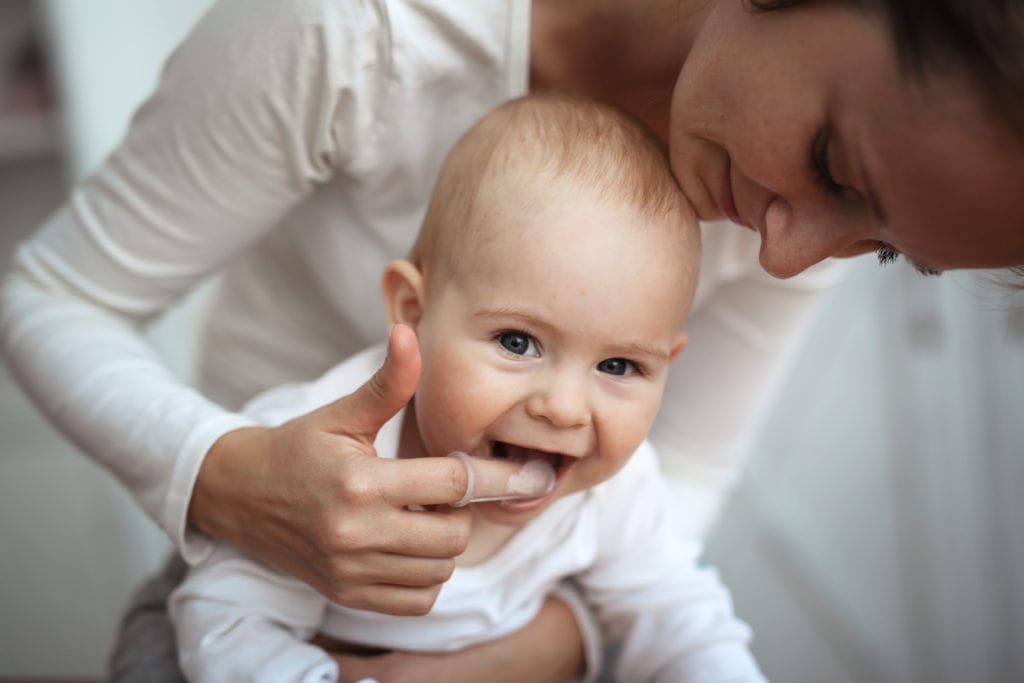There are lots of rumors out there surrounding pregnancy, delivery and newborn care. From whacky pregnancy tales to unheard-of infant conditions, it can be hard to decipher fact from fiction. So, when you hear a news story about a baby being born with teeth, is it something you should believe or brush off as myth?
As it turns out, babies can be born with teeth, but it’s a very rare occurrence. Here’s what you need to know about the situation, as well as some advice for taking care of your first born baby’s teeth – whether or not he or she was born with them.
The lowdown on natal teeth
Teeth that develop in an unborn baby and are present at birth are known as natal teeth. They’re not the same as neonatal teeth, which can grow in during the first 30 days of a newborn’s life. They’re only present in about 1 out of every 2,000 or 3,000 births, and while they’re usually isolated cases, they can be associated with a few medical conditions, such as Ellis-van Creveld syndrome, Hallermann-Streiff syndrome, Pierre Robin syndrome and Soto syndrome.
Most of the time, natal teeth are present in the lower gums where the central incisors, the two front teeth on the bottom of the mouth, will be. Natal teeth might be real baby teeth or extra teeth that grew over the baby teeth and permanent teeth underneath them. Most of the time, they don’t have a very complex root structure, so they’re usually easy to wiggle. While they’re not a huge problem, they can cause tongue irritation for the newborn and breast irritation for the mother if she’s breastfeeding. As such, they’re often taken out in the hospital before a baby is sent home, especially if they’re loose and there’s a risk of the child breathing the teeth in.
Normal tooth development
In regular circumstances, teeth generally come in anywhere between the ages of 4 to 6 months. They usually appear in pairs, starting with the two front lower teeth and the two front top teeth. Then, the side front teeth, the molars and the canines grow in. By age 3, babies usually have a full set of teeth. Baby teeth generally start falling out to let permanent teeth grow in around age 4 or 6.
How to take care of your baby’s teeth
Although they’re only temporary, it’s important to take care of your child’s baby teeth, as they’re crucial for chewing, speaking and holding space for permanent teeth to grow in. When your child starts teething, use a moist washcloth or piece of gauze to wipe his or her gums at least twice a day, preferably after eating and before bed. This removes bacteria that could damage baby teeth as they grow in.
When your baby’s teeth are more grown in, you can use a wet toothbrush with a soft head to brush them – but only use a small amount of fluoride-free toothpaste after age 1. Around age 2, you can start using toothpaste with fluoride, as long as a dentist approves it first. You’ll have to brush your child’s teeth until he or she can hold the brush, and even then, you should be there to supervise the process to coach proper technique. Kids are usually OK to brush their teeth alone when they’re around 6 years old.
If you notice any issues, like tooth discoloration or red gums, take your child to a dentist as soon as possible. After age 1, he or she should have regular cleanings.
